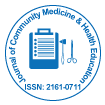Наша группа организует более 3000 глобальных конференций Ежегодные мероприятия в США, Европе и США. Азия при поддержке еще 1000 научных обществ и публикует более 700 Открытого доступа Журналы, в которых представлены более 50 000 выдающихся деятелей, авторитетных учёных, входящих в редколлегии.
Журналы открытого доступа набирают больше читателей и цитируемости
700 журналов и 15 000 000 читателей Каждый журнал получает более 25 000 читателей
Индексировано в
- Индекс Коперника
- Google Scholar
- Шерпа Ромео
- Генамика ЖурналSeek
- БезопасностьЛит
- РефСик
- Университет Хамдарда
- ЭБСКО, Аризона
- OCLC- WorldCat
- Публикации
- Женевский фонд медицинского образования и исследований
- Евро Паб
- ICMJE
Полезные ссылки
Журналы открытого доступа
Поделиться этой страницей
Абстрактный
Determinants Of Uptake Of Insecticide Treated Nets Among Pregnant Women In Ado-Odo Local Government Area Of Ogun State, Nigeria
Amoran OE, Lawal KM, Jeminusi OA, Alabi AA and Oluwole FA
Introduction: Two-fifth of the World population is at risk of malaria in 90 countries across the World with 1.5 million deaths attributable to malaria each year. This study was therefore designed to determine factors associated with the uptake of insecticide treated net among pregnant women Ado –Odo local government area of Ogun State, Nigeria.
Methods: This is an analytical cross-sectional study. A Cluster sampling technique was used to obtain a representative sample of the study population. An interviewer administered structured questionnaire was administered to respondents by trained health workers.
Results: A total of 300 pregnant women were recruited into the study. Majority (72.7%) of the respondents could correctly identify the organism responsible for the cause of Malaria. The prevalence of ever use of ITN was 29.7% and 18.3% are currently using the net. Only 17.7% of the respondents had the correct knowledge of treatment of ITN and majority of the respondents that use ITN treated their fever in pregnancy properly. ITN use among the pregnant women was statistically significantly associated with correct knowledge of causative organism [OR=4.58, C.I=1.67-13.62] and if given free during previous ANC [OR = 31.32, C.I=12.56-81.62].
Conclusion: The study concludes that the use of ITN in the study population is low. A major factor determining the use of ITN among these pregnant women is price and correct knowledge of causative organism. It shows that local knowledge of causative organism is highly relevant for social marketing strategies of ITNs. Uptake of ITN can be significantly improved in low income areas if the nets are made affordable for the pregnant women and backed up with appropriate health education intervention.
Журналы по темам
- Биохимия
- Ветеринары
- Генетика и молекулярная биология
- Геология и науки о Земле
- Еда и питание
- Иммунология и микробиология
- Инженерное дело
- Клинические науки
- Материаловедение
- медицинские науки
- Науки об окружающей среде
- Общая наука
- Сельское хозяйство и аквакультура
- Социальные и политические науки
- Уход и здравоохранение
- Фармацевтические науки
- Физика
- Химия

 English
English  Spanish
Spanish  Chinese
Chinese  German
German  French
French  Japanese
Japanese  Portuguese
Portuguese  Hindi
Hindi